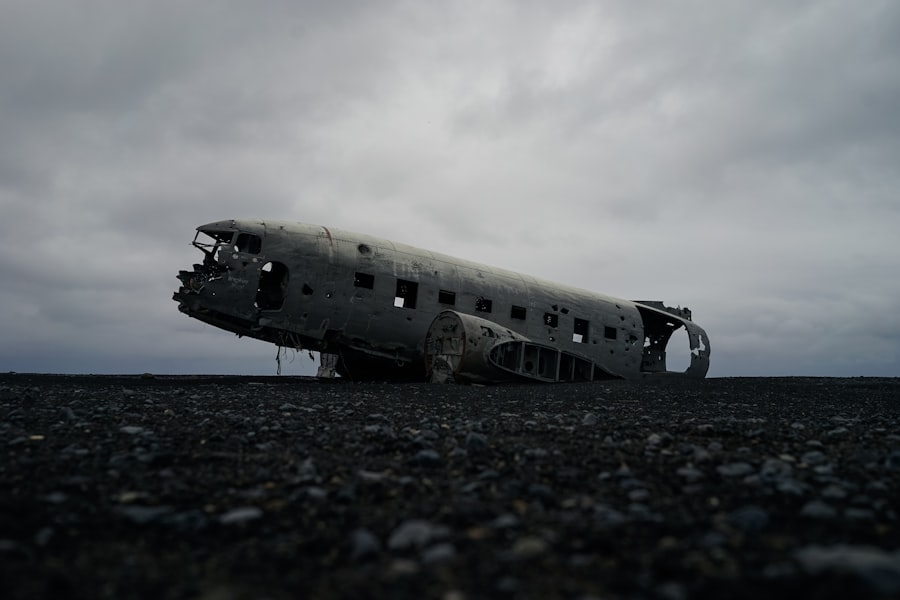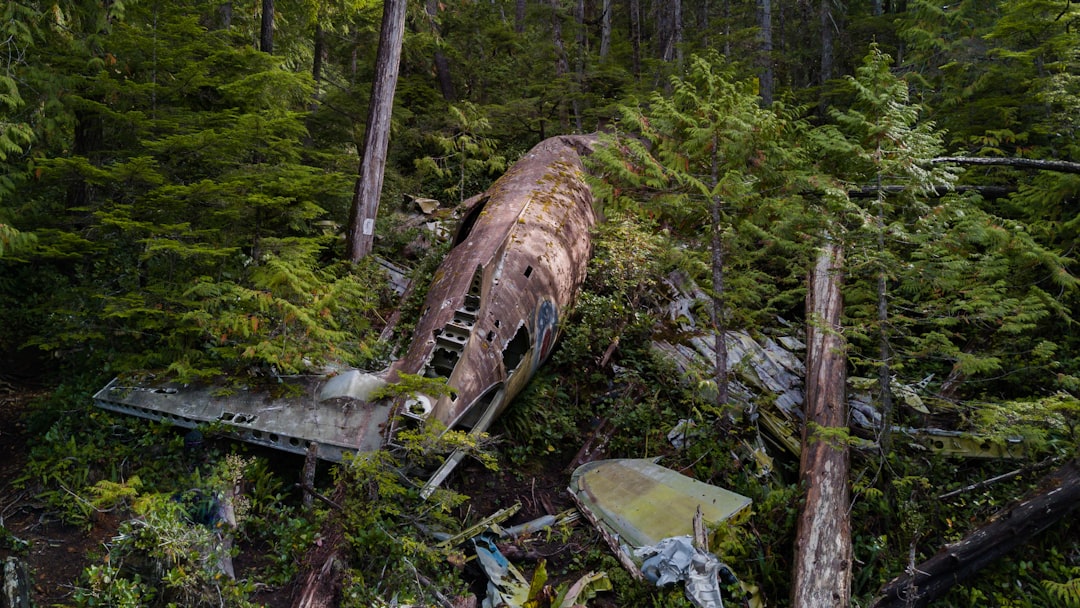Airplane crashes, while statistically rare, evoke a profound sense of fear and fascination among the public. The sheer scale of modern aviation, with millions of flights taking off and landing every year, contrasts sharply with the catastrophic nature of an aircraft accident. These incidents can result in significant loss of life, extensive media coverage, and lasting impacts on the aviation industry and public perception of air travel.
Understanding the dynamics of airplane crashes requires a multifaceted approach that encompasses technical, human, and environmental factors. The history of aviation is marked by both remarkable achievements and tragic failures. From the early days of flight, when pioneers like the Wright brothers took to the skies, to the modern era of commercial aviation, the evolution of aircraft technology has been accompanied by a series of accidents that have shaped regulations and safety protocols.
Each crash serves as a somber reminder of the inherent risks associated with flying, prompting ongoing investigations and improvements in safety measures. The complexity of modern aircraft systems and the multitude of variables involved in flight operations make it essential to analyze these incidents comprehensively.
Statistics on Airplane Crashes
Statistical data on airplane crashes reveals a paradox: while flying is one of the safest modes of transportation, accidents still occur with alarming frequency. According to the Aviation Safety Network, there were 40 fatal airliner accidents in 2022, resulting in 1,200 fatalities. This figure represents a slight increase from previous years but remains significantly lower than historical averages.
The overall trend in aviation safety has improved dramatically over the past few decades, with advancements in technology, training, and regulatory oversight contributing to a decline in accident rates. When examining the statistics, it is crucial to consider the context of air travel. In 2022 alone, over 4 billion passengers were transported by commercial airlines worldwide.
This translates to one fatal accident for every 100 million flights, underscoring the relative safety of air travel compared to other forms of transportation. However, even a single crash can have devastating consequences, leading to heightened scrutiny and calls for improved safety measures. The aviation industry continuously analyzes these statistics to identify patterns and implement strategies aimed at reducing risks associated with flying.
Causes of Airplane Crashes

The causes of airplane crashes are multifaceted and often interrelated, encompassing human error, mechanical failure, environmental factors, and external threats. Human error remains one of the leading contributors to aviation accidents. Pilots may misinterpret instruments or fail to respond appropriately to changing conditions, leading to catastrophic outcomes.
For instance, the infamous crash of Air France Flight 447 in 2009 was attributed to a combination of pilot error and technical malfunctions during severe weather conditions over the Atlantic Ocean. Mechanical failure is another significant factor in airplane crashes. Despite rigorous maintenance protocols and inspections, components can fail unexpectedly due to manufacturing defects or wear and tear.
The Boeing 737 MAX incidents in 2018 and 2019 highlighted how software malfunctions could lead to tragic consequences when not properly addressed. These crashes prompted a reevaluation of safety protocols and regulatory oversight within the aviation industry, emphasizing the need for continuous monitoring and improvement of aircraft systems. Environmental factors also play a critical role in aviation safety.
Weather conditions such as fog, thunderstorms, and icing can severely impact flight operations. For example, low visibility during landing can lead to misjudgments by pilots or difficulties in navigation. Additionally, external threats such as terrorism or sabotage can result in catastrophic events that are difficult to predict or prevent.
The tragic events of September 11, 2001, serve as a stark reminder of how external factors can dramatically alter the landscape of aviation safety.
Safety Measures and Regulations
In response to the various causes of airplane crashes, the aviation industry has implemented a robust framework of safety measures and regulations designed to mitigate risks. Regulatory bodies such as the Federal Aviation Administration (FAA) in the United States and the European Union Aviation Safety Agency (EASA) play pivotal roles in establishing standards for aircraft design, maintenance, and operation. These organizations conduct regular audits and inspections to ensure compliance with safety regulations.
Training is another critical component of aviation safety. Pilots undergo extensive training programs that include simulator sessions designed to replicate emergency scenarios. This training prepares them to respond effectively to unexpected situations during flight.
Additionally, crew resource management (CRM) training emphasizes teamwork and communication among flight crews, fostering an environment where all members feel empowered to voice concerns or suggest alternative actions during critical moments. Technological advancements have also significantly enhanced aviation safety. Modern aircraft are equipped with sophisticated avionics systems that provide real-time data on flight parameters and environmental conditions.
These systems can alert pilots to potential issues before they escalate into emergencies. Furthermore, innovations such as terrain awareness warning systems (TAWS) and automatic dependent surveillance-broadcast (ADS-B) technology have improved situational awareness for pilots and air traffic controllers alike.
Impact of Airplane Crashes
The impact of airplane crashes extends far beyond the immediate loss of life and property damage; it reverberates through communities, industries, and regulatory frameworks. Families affected by such tragedies often experience profound grief and trauma that can last for years. The emotional toll on survivors and victims’ families is compounded by media coverage that frequently sensationalizes these events, leading to public fear and anxiety surrounding air travel.
Economically, airplane crashes can have devastating effects on airlines involved in accidents. Beyond the immediate costs associated with investigations and compensation claims, airlines may face long-term reputational damage that affects passenger confidence and ticket sales. For instance, following the crashes of the Boeing 737 MAX, airlines operating this model experienced significant financial losses due to grounded fleets and reduced consumer trust.
On a broader scale, airplane crashes can prompt changes in regulations and industry practices aimed at preventing future incidents. Investigations conducted by organizations such as the National Transportation Safety Board (NTSB) often lead to recommendations for improved safety measures that can influence global aviation standards. These changes may include updates to pilot training protocols, enhancements in aircraft design, or stricter maintenance requirements.
Trends in Airplane Crashes

Analyzing trends in airplane crashes reveals important insights into the evolving landscape of aviation safety. Over recent decades, there has been a notable decline in fatal accidents per million flights due to advancements in technology and increased regulatory oversight. However, certain trends continue to emerge that warrant attention from industry stakeholders.
One significant trend is the increasing complexity of aircraft systems. As technology advances, modern aircraft are equipped with more sophisticated avionics and automation features designed to enhance safety and efficiency. While these innovations have contributed to improved safety records overall, they also introduce new challenges related to pilot training and reliance on automated systems.
Incidents involving automation-related errors highlight the need for ongoing education and adaptation within pilot training programs. Another trend is the growing concern over cybersecurity threats in aviation. As aircraft become more interconnected through digital systems and networks, vulnerabilities may arise that could be exploited by malicious actors.
The potential for cyberattacks on critical flight systems poses a new frontier for aviation safety that requires proactive measures from manufacturers, airlines, and regulatory bodies alike.
Famous Airplane Crashes
Throughout history, several airplane crashes have captured public attention due to their tragic outcomes or unique circumstances. One such incident is the crash of Pan Am Flight 103 over Lockerbie, Scotland, in 1988. The bombing resulted in the deaths of all 259 passengers on board as well as 11 individuals on the ground.
This tragedy not only highlighted vulnerabilities in airport security but also led to significant changes in international regulations regarding baggage screening and passenger screening processes. Another notable crash is that of Malaysia Airlines Flight MH370 in 2014, which mysteriously disappeared while en route from Kuala Lumpur to Beijing. Despite extensive search efforts involving multiple countries and advanced technology, the wreckage has never been fully recovered or explained.
This incident raised questions about tracking technologies for commercial flights and prompted discussions about improving communication systems between aircraft and ground control. The crash of Ethiopian Airlines Flight 302 in March 2019 further underscored concerns surrounding aircraft design and regulatory oversight. The accident involved a Boeing 737 MAX shortly after takeoff from Addis Ababa, resulting in 157 fatalities.
Investigations revealed issues related to the aircraft’s Maneuvering Characteristics Augmentation System (MCAS), leading to widespread grounding of the MAX fleet worldwide and significant scrutiny over Boeing’s practices.
Conclusion and Future Outlook
As we look toward the future of aviation safety, it is clear that ongoing vigilance is essential in addressing emerging challenges while building upon past successes. The lessons learned from historical crashes continue to inform regulatory practices and technological advancements aimed at enhancing safety protocols across the industry. The integration of artificial intelligence (AI) into aviation operations holds promise for further improving safety outcomes by enabling predictive maintenance models that can identify potential mechanical failures before they occur.
Additionally, advancements in data analytics may enhance situational awareness for pilots and air traffic controllers alike. However, as technology evolves rapidly within aviation systems, so too must our approach to training pilots and crew members who operate these complex machines. Emphasizing adaptability and critical thinking skills will be crucial as we navigate an increasingly automated landscape.
Ultimately, while airplane crashes will always remain a tragic possibility within air travel, continued collaboration among industry stakeholders—airlines, manufacturers, regulators—and ongoing investment in research will be vital for ensuring that flying remains one of the safest modes of transportation available today.
FAQs
How many airplane crashes occur each year?
According to the International Air Transport Association (IATA), there were 40 accidents involving commercial flights in 2020, resulting in 299 fatalities.
What are the main causes of airplane crashes?
The main causes of airplane crashes include pilot error, mechanical failure, weather conditions, and air traffic control errors.
What are the safety measures in place to prevent airplane crashes?
Safety measures to prevent airplane crashes include rigorous pilot training, regular aircraft maintenance, strict adherence to safety regulations, advanced technology in aircraft design, and improved air traffic control systems.
How do airplane crashes impact the aviation industry?
Airplane crashes can have a significant impact on the aviation industry, leading to increased safety regulations, changes in aircraft design, and a focus on improving safety protocols. Additionally, crashes can also lead to financial losses for airlines and a decrease in passenger confidence.










